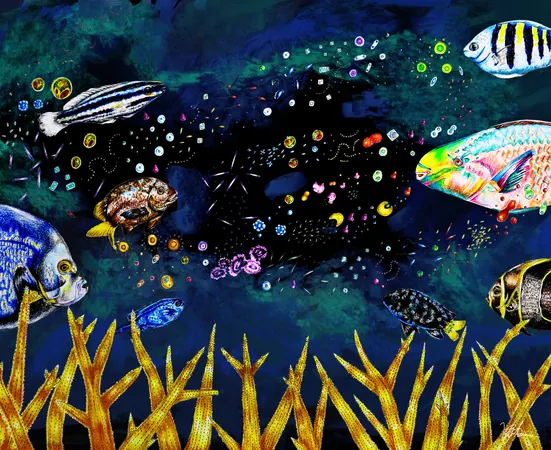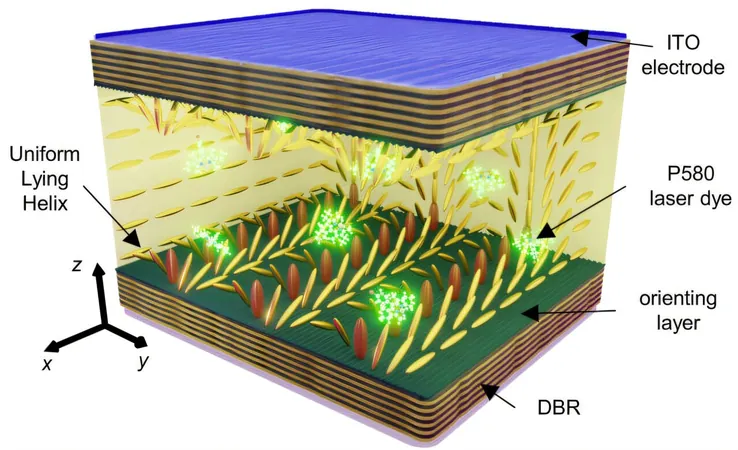
Unlocking Coral Secrets: How Resilient Reefs Battle Rising Ocean Temperatures
2025-06-06
Author: Ming
The Power of Art in Science
When Victoria Glynn arrived in Panama to investigate how extreme ocean temperatures impact coral reefs at the Smithsonian Tropical Research Institute, she utilized her artistic talents to engage children in her research. Now, her captivating illustrations are helping the wider audience grasp an enlightening insight: corals from fluctuating ocean environments may adapt more successfully to escalating temperatures than those from stable habitats.
More Than Just Coral
Most people envision coral as simple lumps resembling deer antlers, perhaps accompanied by fish or shells. However, Victoria’s creations reveal their intricate nature, highlighting not just the coral animal and its skeleton, but also the vital symbiotic algae and the diverse community of microorganisms—collectively termed the coral holobiont, meaning 'the whole living thing.' Victoria, now a post-doctoral associate at the University of Vermont, notes, "Just as our gut microbiome significantly influences our health, corals rely heavily on their microbiomes for survival."
The Threat of Coral Bleaching
Corals and their algae depend on a symbiotic relationship. However, when water temperatures rise, the algae often abandon the coral, leading to a phenomenon known as coral bleaching—leaving only the pale skeleton behind. This research, part of the Rohr Reef Resilience Project, investigates how corals in varying temperature conditions respond.
A Natural Laboratory for Research
Panama’s unique geography provides scientists easy access to the Tropical Eastern Pacific, ideal for studying how corals endure temperature extremes. Project scientists examined the resilience of corals in the Gulf of Panama, an area characterized by yearly temperature fluctuations, compared to the more stable conditions of the Gulf of Chiriquí.
Vital Questions Under Investigation
The research team tackled three critical inquiries: How do elevated ocean temperatures affect coral-algal relationships? What impact is observed on their bacterial microbiomes? And, do these interactions reveal why certain corals thrive under heat stress? By sampling cauliflower corals (Pocillopora spp.) from both sites and subjecting them to controlled heat stress experiments, the researchers aimed to uncover these secrets.
Insights Uncovered
The findings revealed that genetically, corals from both sites were similar, yet subtle genetic differences could play a vital role in their thermal resilience. Surprisingly, while earlier studies indicated that corals often switched to more heat-tolerant algal genera, some maintained their original partners even under stress.
Microbiome Changes Under Heat Stress
Both coral samples experienced microbiome disruptions at elevated temperatures, shifting into a more disease-prone state. However, the corals from the Gulf of Panama exhibited better heat tolerance than those from the more stable environment, suggesting resilience mechanisms at play in variable habitats.
Conservation Implications
As coral reefs—covering merely 0.1% of Earth’s surface yet supporting around 25% of marine life—continue to face threats from rising ocean temperatures, understanding the resilience of certain corals becomes paramount for conservation initiatives. Victoria emphasizes that viewing corals as an integrated whole rather than merely a duo enhances our comprehension critical for safeguarding biodiversity.
Art Meets Science
Victoria’s artwork not only encapsulates the beauty of these organisms but also serves as a medium for sharing her fervor for marine conservation. Her illustrations inspire others to appreciate the intricate and vital ecosystems beneath the waves, reminding us why we must protect our planet's underwater treasures.


 Brasil (PT)
Brasil (PT)
 Canada (EN)
Canada (EN)
 Chile (ES)
Chile (ES)
 Česko (CS)
Česko (CS)
 대한민국 (KO)
대한민국 (KO)
 España (ES)
España (ES)
 France (FR)
France (FR)
 Hong Kong (EN)
Hong Kong (EN)
 Italia (IT)
Italia (IT)
 日本 (JA)
日本 (JA)
 Magyarország (HU)
Magyarország (HU)
 Norge (NO)
Norge (NO)
 Polska (PL)
Polska (PL)
 Schweiz (DE)
Schweiz (DE)
 Singapore (EN)
Singapore (EN)
 Sverige (SV)
Sverige (SV)
 Suomi (FI)
Suomi (FI)
 Türkiye (TR)
Türkiye (TR)
 الإمارات العربية المتحدة (AR)
الإمارات العربية المتحدة (AR)